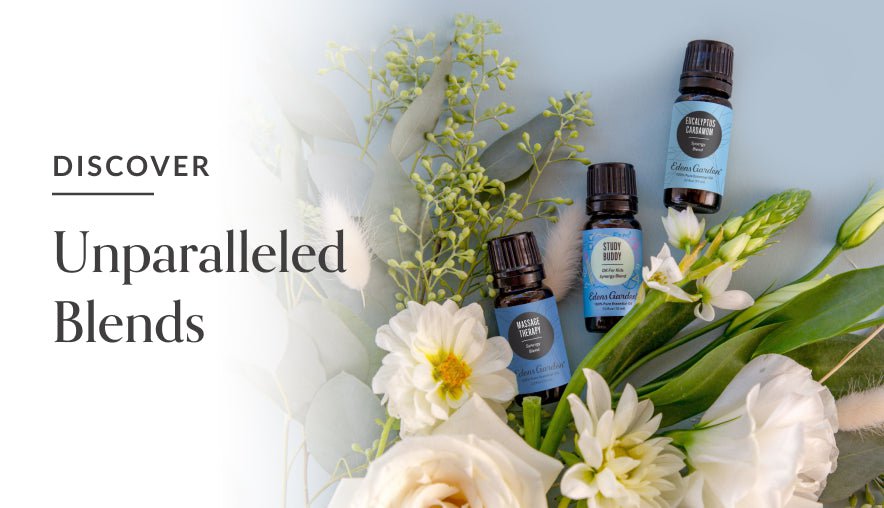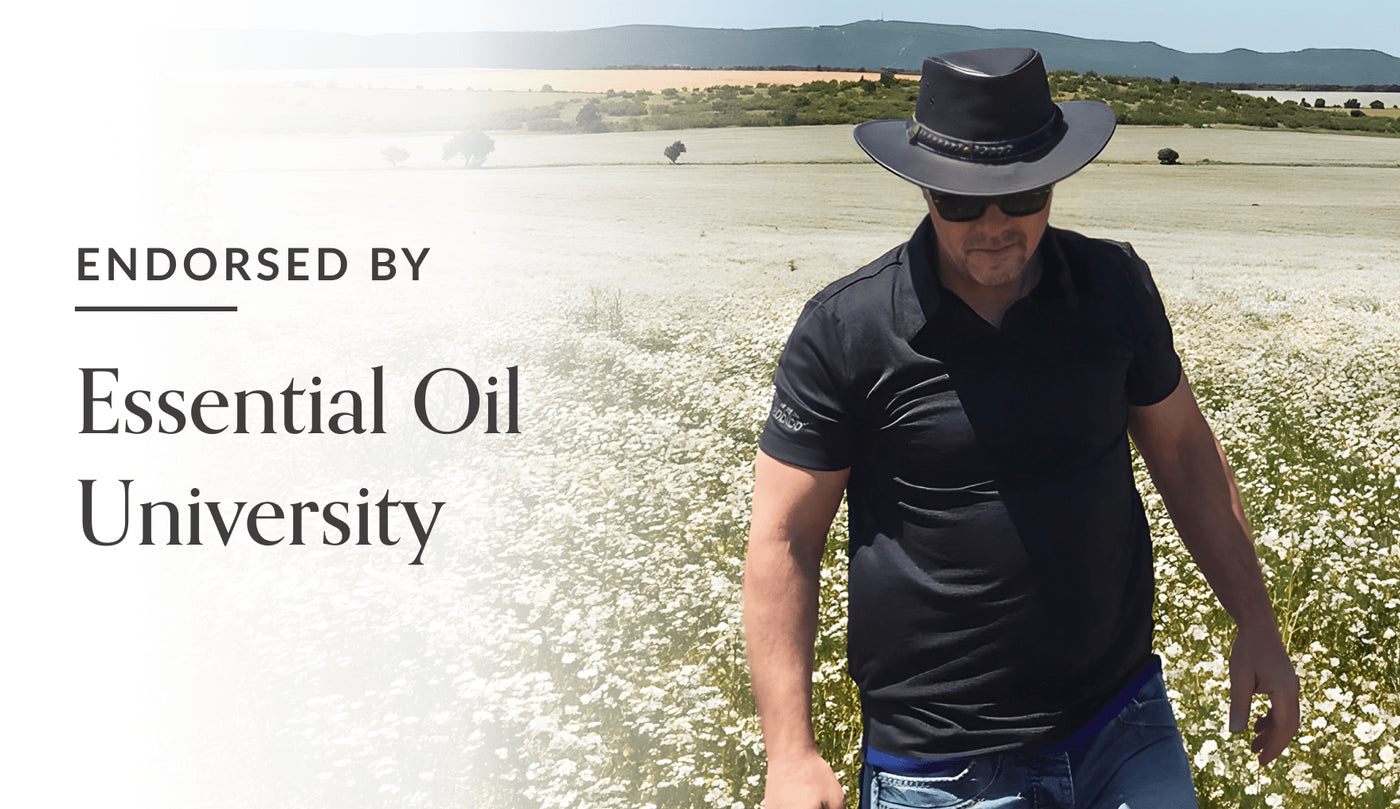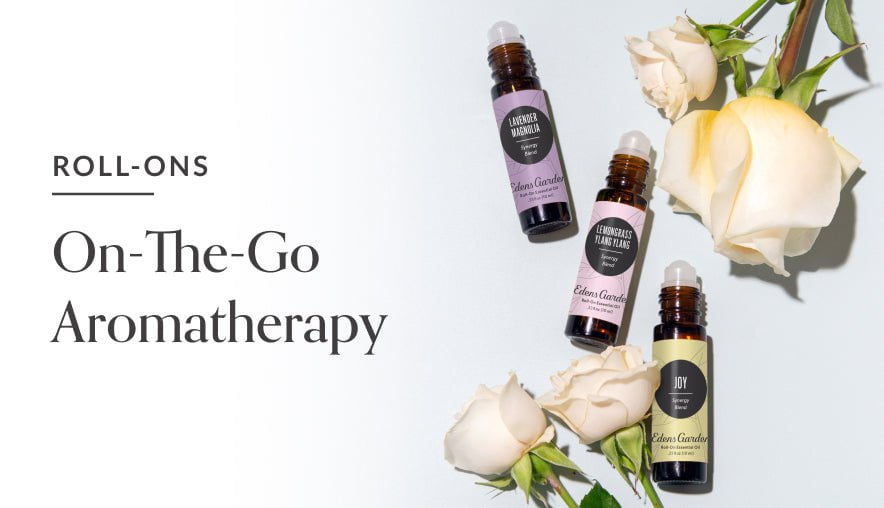What Age Can I Use Non-Ok For Kids Oils Around Kids?

When it comes to educating people on how to use essential oils safely, child safety is at the forefront of our minds. It’s in large part what inspired our OK For Kids collection – a safe and effective line of essential oil blends that help aid the everyday needs of children (and parents).
Still, you may be wondering when your child can graduate onto oils that haven’t received the OK For Kids seal of approval, and why these oils aren’t considered OK For Kids to begin with. Here’s what you need to know about reaching the next milestone in you and your child’s essential oil journey.
Essential Oil Safety Recommendations For Kids
Our decision in not labeling certain oils as OK For Kids does not mean that they can’t be used safely with kids 2+ in certain situations. Rather, it means that they have heightened safety precautions that require a greater level of care when using them with children.
For example, when using non-OFK oils with children, try halving the dilution of essential oils for topical use and diffusing for a short period of time. If you’re creating a blend with a non-OFK oil, include more OFK oils than non-OFK oils.
According to Essential Oil Safety 2nd edition by Robert Tisserand and Rodney Young, there are a handful of oils with specific safety recommendations for young children. These safety recommendations and oils include the following: [[1]
Avoid Using On Children (Topical, Inhalation)
-
Wintergreen
-
Vitex
Avoid Using On Children Under 5 (Topical, Inhalation)
-
Fennel
Do Not Use Topically On Children Under 2
-
Cassia
-
Clove Bud
-
Laurel Leaf
-
Lemon Basil
-
Lemon Myrtle
-
Lemon Tea Tree
-
Litsea
-
Melissa
-
Mountain Savory
-
Oregano
-
Peru Balsam
-
Ylang Ylang (all)
Do Not Apply To Or Near The Face Of Young Children
-
Cajeput
-
Cardamom
-
Eucalyptus (all)
-
Helichrysum Gymnocephalum
-
Laurel Leaf
-
Niaouli
-
Peppermint
-
Ravintsara
-
Rosemary Moroccan
While the above oils fall under individual safety categories, we’ve made the blanket decision to forgo giving them the “OK For Kids 2+” seal, because we take a conservative approach on safe essential oil usage with children.
The above oils are also not a full and complete list of oils we do not regard as “OK For Kids.” For example, non-Ok For Kids oils such as Allspice, Cinnamon Bark and Cinnamon Leaf all have a recommended maximum dilution rate of less than 1%. They are considered “hot oils” and can be irritating to the skin–especially the skin of young children.
If you’re wondering if an Edens Garden single essential oil is safe for your child, check the label for the “OK For Kids 2+” symbol, or review the “Safety & Shelf Life” section of the oil’s product page.
Different Points Of View On Aromatherapy & Child Safety
There are no hard and fast rules when it comes to using essential oils safely with children. While we tend to err on the side of caution when it comes to aromatherapy and child safety, some choose to be more liberal in using essential oils with children and some are more cautious than we. Here’s what other aromatherapists have to say on the matter.
-
Aromatherapist, Andrea Butje of Aromahead Institute does not recommend the use of essential oils on children under the age of 5 due to their systems being sensitive. Instead, she recommends the use of hydrosols, carrier oils and butters to aid their daily needs. [[2]
-
Aromatherapist, Hana Tisserand states that diffusing and applying a .5% dilution of cineole-rich oils, such as Eucalyptus, with children under 3 years old is permissible. Regarding Peppermint, she recommends avoiding diffusion with children under 3 and states that diffusion and a .5% dilution for topical use is safe for children 3-6 years old. [[3]
-
Formulator and aromatherapist, Lauren Bridges notes that topical essential oil preparations for children do not always need to be diluted to 1% (as is often recommended) if this dilution is not helping the child. She also notes that Eucalyptus can be used with children.
While some of these points are not in line with our approach at Edens Garden, we want you to know that other points of view do exist and allow you to draw your own conclusions on what’s best for your children.
What Age Can I Use Non-Ok For Kids Oils With My Kids?
At Edens Garden, we want to leave that decision up to you. While a healthy child can probably use most non-OFK oils under safe guidelines starting at around age 5, a child with more sensitivities such as allergies and asthma may need to hold off until ages 7-10.
By educating yourself on essential oils and child safety, you will gain the tools needed to make the best decisions for your children, even if it breaks the “rules.” And if you’re still unsure about using essential oils safely with children, here is a list of essential oil guidelines that err on the side of caution for children.
Essential Oil Child Safety Guidelines
-
Keep essential oils out of reach of children.
-
Do not apply essential oils to the face.
-
Do not let children ingest essential oils.
-
Avoid using essential oils with children under 2 years old.
-
For topical use, dilute to 1%. For spot treatment, such as with roll-ons, this dilution may increase.
-
Check the “Safety & Shelf Life” section of an essential oil or blend’s product page to find out if it’s safe for kids 2+.
-
If using an active diffuser, diffuse for 15-20 minutes around children. Passive diffusers can be used longer.
-
Check with a pediatrician before using essential oils with your child.
Using Non-Ok For Kids Oils Safely With Kids 2+
If you feel comfortable enough and want to use non-OFK essential oils for children, here are some safe recipes for a child’s everyday needs.
-
Clear Nose: Add 7 drops of Eucalyptus and 7 drops of Lavender to a diffuser. Run the diffuser for 15-20 minutes in a room with your child, then turn it off.
-
Happy Kid: Create a warm, cheerful aroma by adding 3 drops of Cinnamon Leaf and 7 drops of Sweet Orange to a diffuser. Run the diffuser for 15-20 minutes.
-
Sleep Well: Diffuse 3 drops of Ylang Ylang, 4 drops of Lavender and 5 drops of Roman Chamomile 15 minutes before your child’s bedtime.
-
Bumps & Scrapes: Dilute 2 drops of Rosemary Moroccan and 4 drops of Tea Tree in 1 oz of carrier oil and apply to the affected area,
-
Immune Boost: Use a light amount of Fighting Five room spray around your home to deter environmental threats.
OK For Kids
While all of this may seem like a lot to take in, we’ve taken the guesswork out of finding oils safe for your child with our OK For Kids collection. Featuring 18 safe and effective essential oil blends for everyday needs, this collection was expertly formulated with parents and children in mind. Get to know the OK For Kids collection here.
Sources:
- Tisserand, Robert, and Rodney Young.Essential Oil Safety.2nd ed., Churchill Livingstone, 2014.
- Butje, Andrea Lmt. “Using Essential Oils for Kids: What Is Safe?” Aromahead Institute, 26 Oct. 2015, blog.aromahead.com/2015/10/26/using-essential-oils-kids-safe.
- Tisserand, Hana. “Peppermint and Eucalyptus for Children.” Tisserand Institute, 7 July 2020, tisserandinstitute.org/learn-more/kids-inhalation-safety.




Leave a comment (Comments will be approved before showing up)